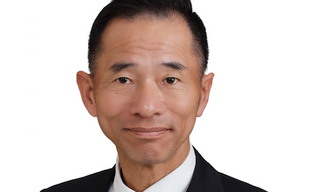The Post-DeepSeek Outlook for Artificial Intelligence
Markets have been shaken by the breaking news of a Chinese rival AI model that claims to be superior to US counterparts. How should investors be positioned moving forward?
On January 20, DeepSeek released its latest open-source artificial intelligence (AI) model. Founded by Chinese hedge fund manager Liang Wenfeng, the Hangzhou-based company boasts that its model was built in two months with $5.6 million – a fraction of the cost required by US competitors.
Rival OpenAI is already challenging the claims. It says that it has found evidence that DeepSeek used «distillation» – a technique to obtain better performance on smaller models by using outputs from larger, more capable ones – according to a «Financial Times» report citing the San Francisco-based firm.
Threat to American AI
A note by the chief investment office (CIO) of HSBC Global Private Banking & Wealth comments on DeepSeek's possible use of distillation to create its low-cost large language model (LLM), adding that it only reflects «the cost of the existing training, so costs seem to be understated».
«Moreover, it would be astonishing if a small and somewhat unknown company with relatively few resources founded in 2023 had developed a model in less than two years that is better than anything developed by all the US and European companies and academia combined,» the bank said.
«It also remains a question how much DeepSeek would be able to directly threaten US LLMs given potential regulatory measures and constraints, and the need for a track record on its reliability.»
Cost Efficiency is Good
Regardless of the legitimacy of the claims, there is a unanimous view that the development of DeepSeek is good for the AI industry. HSBC highlighted that more efficiency and lower prices could «accelerate usage and help create new use cases, which in turn should support the demand for chips in the medium-to-long term».
«A lower-cost model […] may even lead to higher demand for AI infrastructure, even if it is less compute-intensive. Because of lower cost, the lower demand for AI infrastructure compute intensity could be more than offset by wider adoption,» according to a separate note by UBS’ CIO.
«Experience from the mobile phone industry shows that the introduction of more cost-effective smartphones has led to wider adoption globally, while industry leaders have remained dominant in the high-end segment.»
Growth Story Not Derailed
For investors, banks remain bullish on the long-term AI growth story and reiterate the need to diversify.
«We recommend investors closely monitor upcoming tech results, take advantage of any extreme volatility (including through structured strategies), and build positions for longer-term growth in the AI ecosystem, power and resources, and equity markets more broadly,» UBS said.
[T]he prospects of lower costs for developing AI should be a boost for overall innovation and productivity for the US market,» said a Standard Chartered note. «We remain confident in the overall growth prospects of the US equity market given solid economic growth. Hence, we see a buying opportunity for US equities, with technical support at 5,800 (bottom of the uptrend) followed by the next support at 5,600.»


























